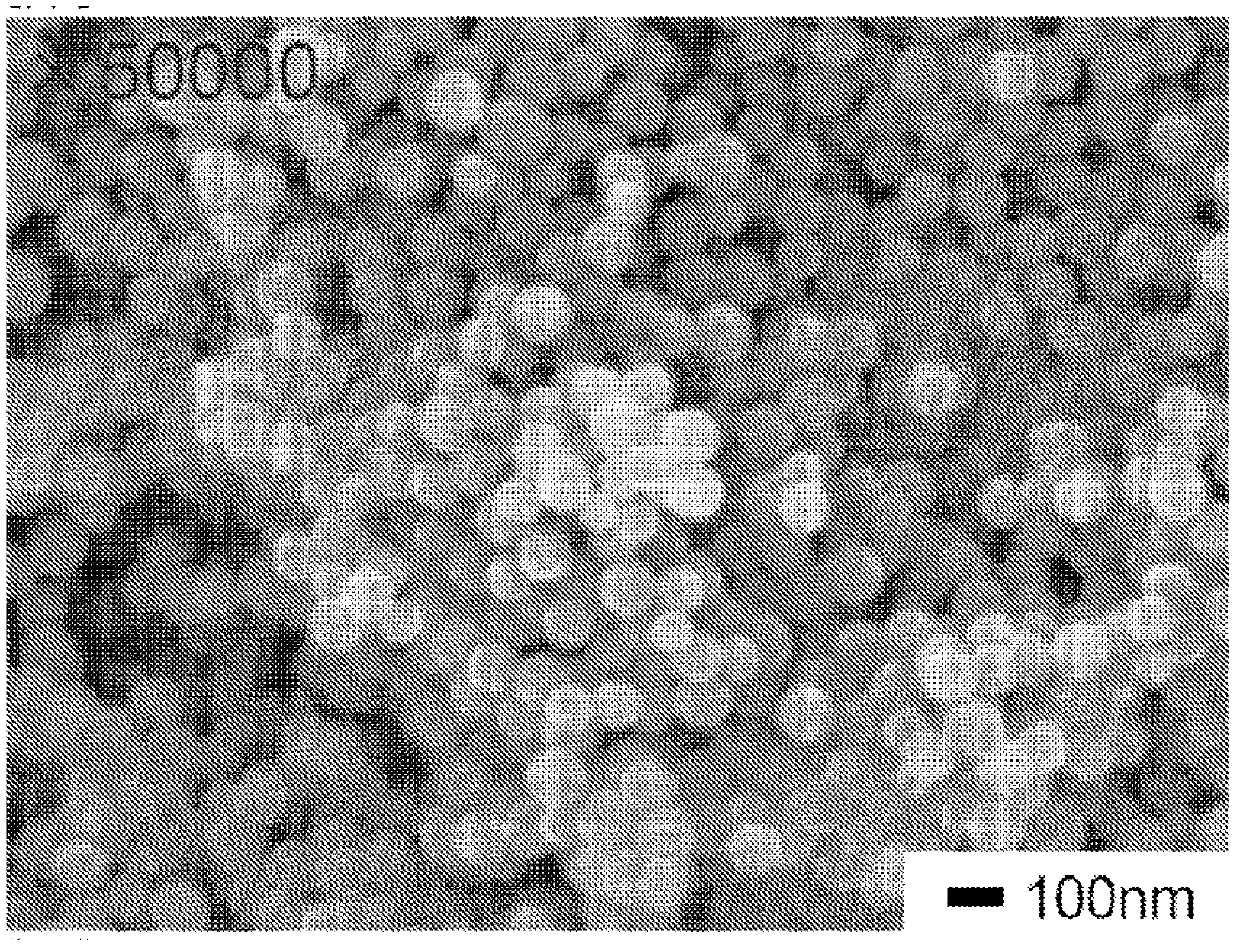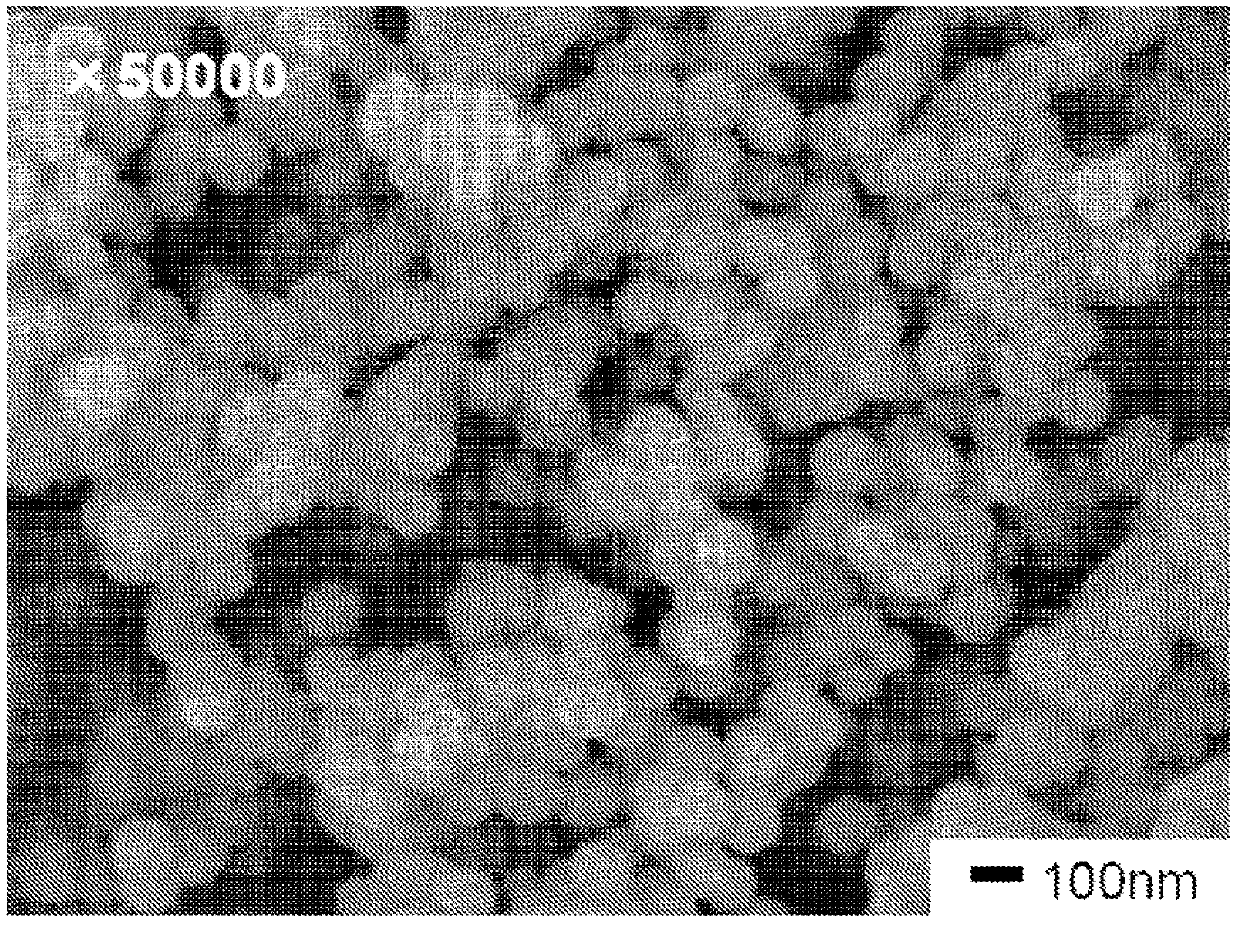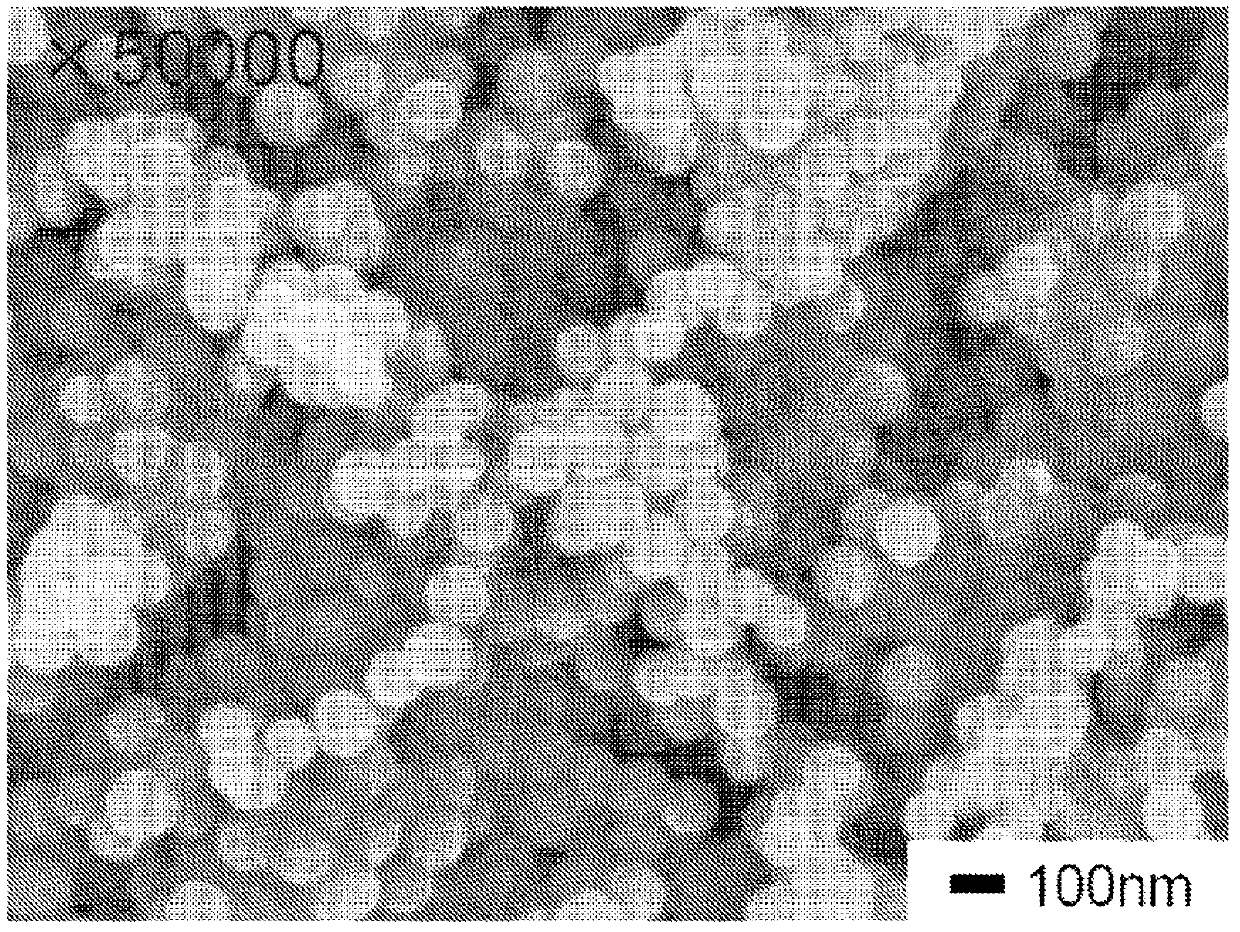Process for producing porous silica particles, resin composition for antireflection coatings, article with antireflection coating, and antireflection film
A technology of silicon dioxide and a manufacturing method, which is applied in the treatment of silicon dioxide, silicon oxide, dyed organosilicon compounds, etc., can solve the problems of low output of porous silicon dioxide particles and poor manufacturing efficiency, and achieves good production efficiency, The effect of low dielectric constant and high yield
- Summary
- Abstract
- Description
- Claims
- Application Information
AI Technical Summary
Problems solved by technology
Method used
Image
Examples
Embodiment 1
[0129] 213.2 g of methanol, 61.3 g of pure water, and 27.4 g of 28% by mass ammonia water were put into a 500 mL 4-necked flask equipped with a thermometer and a stirring blade, and were uniformly mixed by stirring (liquid B), and the inner temperature was kept at 20°C. Separately, 34.3 g of tetramethoxysilane (hereinafter abbreviated as “TMOS”), 45.1 g of methanol, and 6.5 g of octylamine were uniformly mixed in another container (liquid A). The inside of the flask was kept at 20°C, and liquid A was poured into liquid B over 120 minutes while stirring. After the liquid A was injected, the reaction was continued at 20° C. for 60 minutes. After the reaction, the reaction solution was centrifuged at 10,000 rpm for 10 minutes, and then the supernatant was discarded and the precipitate was taken out.
[0130] 200 g of methanol was added to the precipitate obtained above, followed by stirring and mixing to obtain a suspension. The suspension was centrifuged at 10,000 rpm for 10 m...
Embodiment 2
[0132] 213.2 g of methanol, 61.3 g of pure water, and 27.4 g of 28% by mass ammonia water were put into a 500 mL 4-necked flask equipped with a thermometer and a stirring blade, and were uniformly mixed by stirring (liquid B), and the inner temperature was kept at 20°C. Separately, 34.3 g of TMOS, 45.1 g of methanol, and 39.3 g of decylamine were uniformly mixed in another container (liquid A). The inside of the flask was kept at 20°C, and liquid A was poured into liquid B over 120 minutes while stirring. After the liquid A was injected, the reaction was continued at 20° C. for 60 minutes. After the reaction, the reaction solution was centrifuged at 10,000 rpm for 10 minutes, and then the supernatant was discarded and the precipitate was taken out.
[0133]200 g of methanol was added to the precipitate obtained above, followed by stirring and mixing to obtain a suspension. The suspension was centrifuged at 10,000 rpm for 10 minutes, the supernatant was discarded, and the pre...
Embodiment 3
[0135] 213.2 g of methanol, 61.3 g of pure water, and 27.4 g of 28% by mass ammonia water were put into a 500 mL 4-necked flask equipped with a thermometer and a stirring blade, and were uniformly mixed by stirring (liquid B), and the inner temperature was kept at 20°C. Separately, 34.3 g of TMOS, 45.1 g of methanol, and 9.3 g of laurylamine were uniformly mixed in another container (liquid A). The inside of the flask was kept at 20° C., and liquid A was poured into liquid B over 120 minutes. After the liquid A was injected, the reaction was continued at 20° C. for 60 minutes. After the reaction, the reaction solution was centrifuged at 10,000 rpm for 10 minutes, and then the supernatant was discarded and the precipitate was taken out.
[0136] 200 g of methanol was added and mixed to the precipitate obtained above to obtain a suspension. The suspension was centrifuged at 10,000 rpm for 10 minutes, the supernatant was discarded, and the precipitate was washed with methanol. ...
PUM
| Property | Measurement | Unit |
|---|---|---|
| particle diameter | aaaaa | aaaaa |
| particle diameter | aaaaa | aaaaa |
| particle diameter | aaaaa | aaaaa |
Abstract
Description
Claims
Application Information
 Login to View More
Login to View More - R&D
- Intellectual Property
- Life Sciences
- Materials
- Tech Scout
- Unparalleled Data Quality
- Higher Quality Content
- 60% Fewer Hallucinations
Browse by: Latest US Patents, China's latest patents, Technical Efficacy Thesaurus, Application Domain, Technology Topic, Popular Technical Reports.
© 2025 PatSnap. All rights reserved.Legal|Privacy policy|Modern Slavery Act Transparency Statement|Sitemap|About US| Contact US: help@patsnap.com



